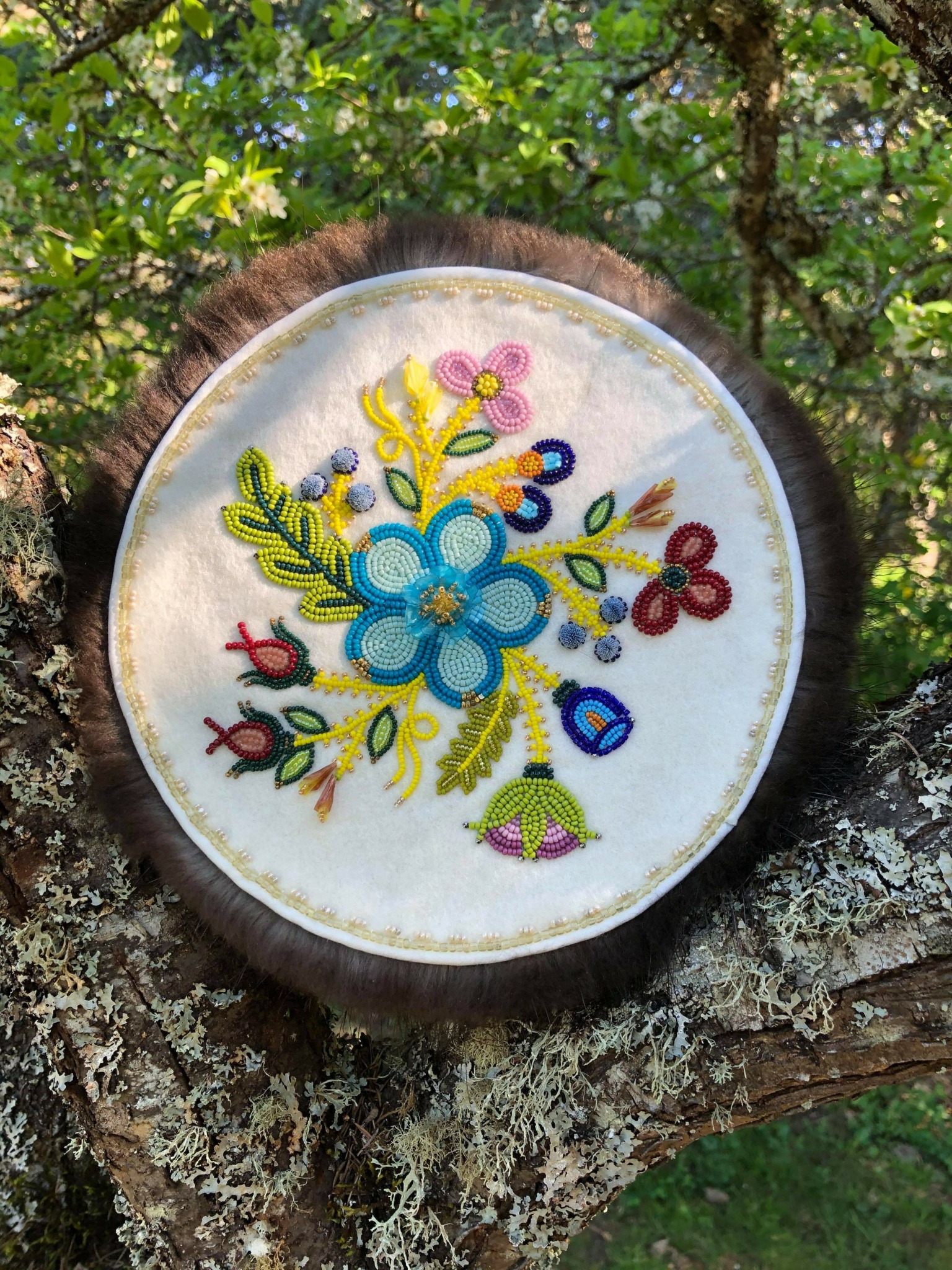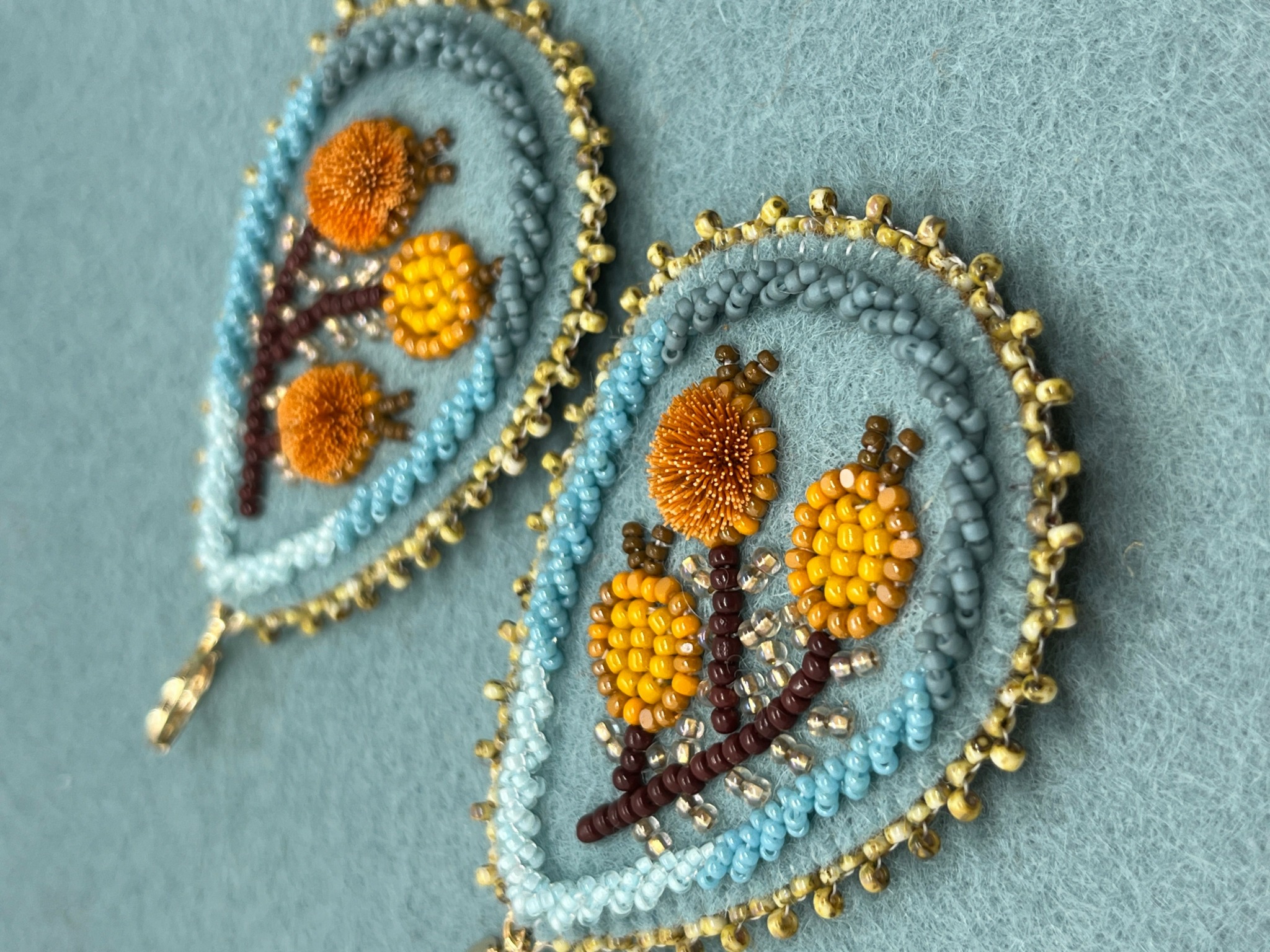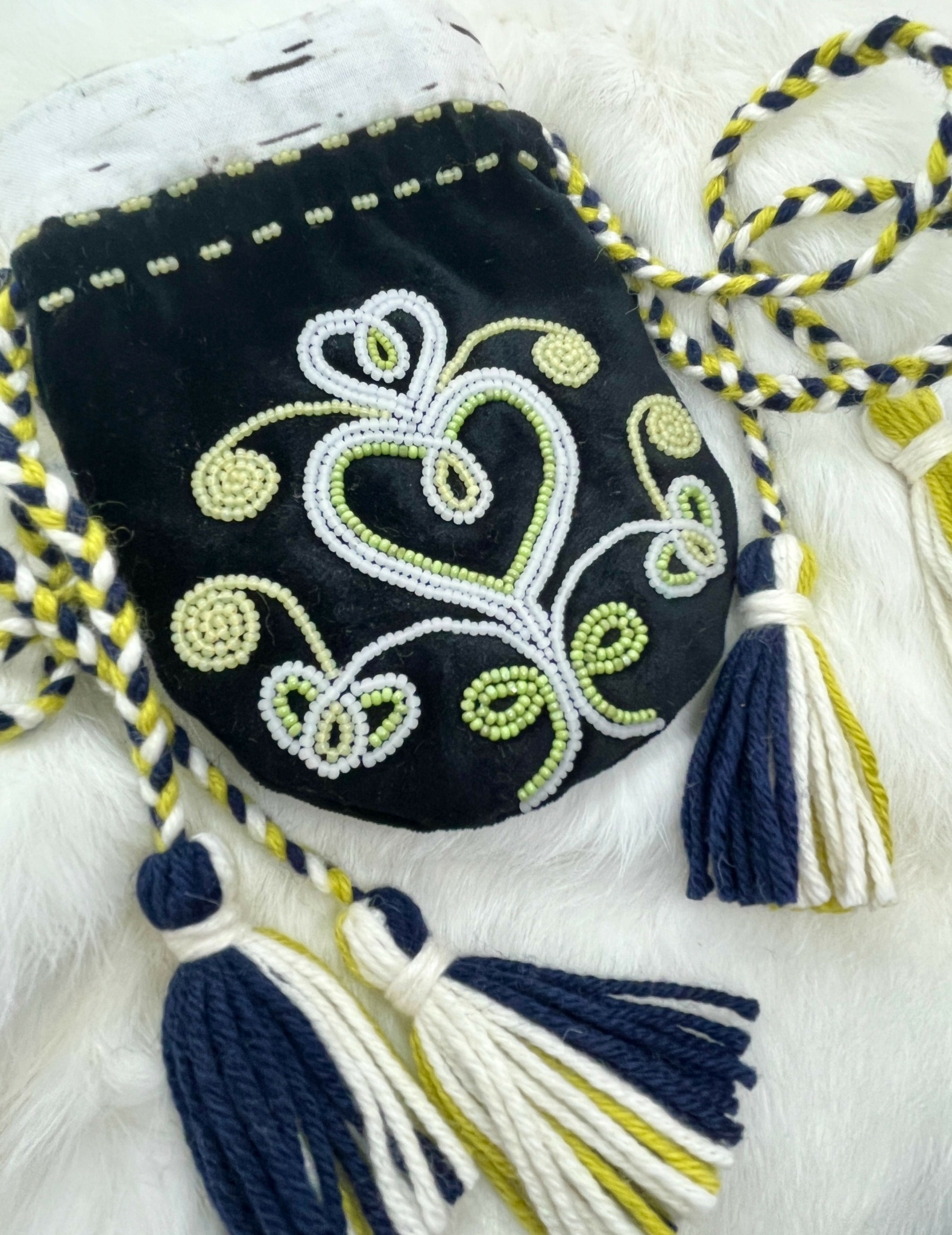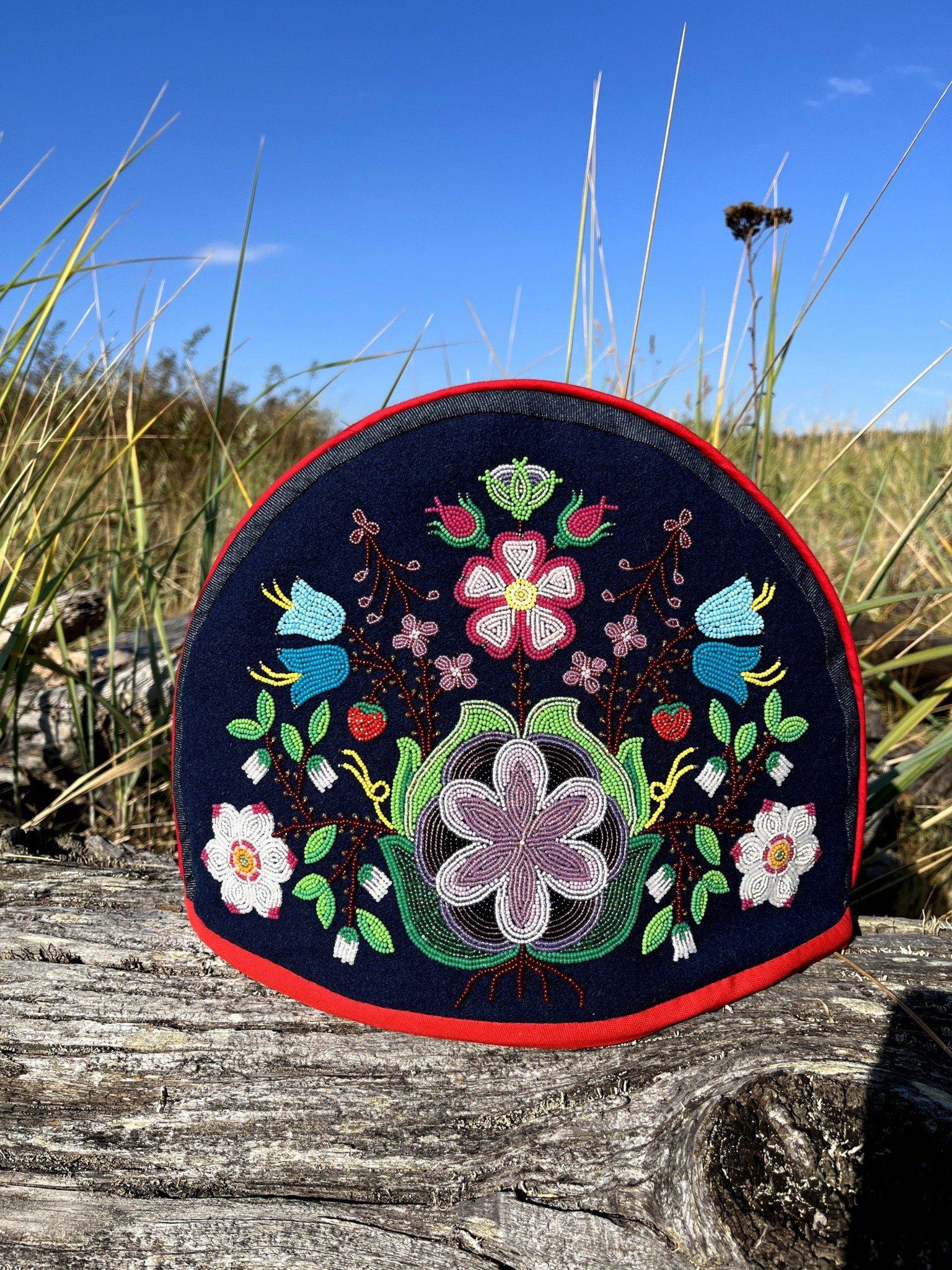We’re excited to introduce you to the always interesting and insightful Lynette La Fontaine. We hope you’ll enjoy our conversation with Lynette below.
Hi Lynette, thanks for joining us today. Can you talk to us about how you learned to do what you do?
I am grounded in my Michif culture and my art work involves traditional materials, protocols, relationships to knowledge keepers, Elders, the land and waters, and ceremony. I learned many of my skills from traditional mentorships and time in community. Each traditional art form takes years to build a relationship with a knowledge holder or Elder, learn the processing and understanding of materials, as well as learning to work with the materials in my art practice. Traditional art practices are laborious and slow. I respect the need for a lot of patience, focus, humility, and discipline for working with natural materials. We have to be mindful of the health of the animals, land, water, plants, and each other when working with our traditional materials, which are often the parts of fish, birds, and animals we traditionally harvest and cannot eat, such as hair, skin, fur, scales, and more. These art practices connect us to ourselves, each other, our families and communities, our ancestors and future generations. It is important for learning in order to pass on to the future generation. Our values and beliefs are embedded in our art forms and express our culture and identity.
Obstacles for learning more can include impacts of colonization, access to materials, and living diaspora.

Lynette, before we move on to more of these sorts of questions, can you take some time to bring our readers up to speed on you and what you do?
Métis people are known as otipemisiwak; the meaning translates to being the boss of ourselves or the free people. One can take this teaching to empower the strength residing in all of us. We are also known as Michif (the language we speak), apihtowkosisan (half son in Nehiyaw), halfbreed, and bois brulée. We were nicknamed the ‘flower beadwork people’ by our Lakota relations due to our densely floral beadwork on all our clothing and accessories, including jackets, gun sacks, fire bags, dog tuppies, horse blankets, moccasins, leggings and so much more. We love to show our Métis pride by wearing embellished and beaded items. I often create contemporary wearable beadwork in the form of earrings, bracelets, and moccasins, incorporating fur, hide, semi precious stones, and porcupine quills. No part of animals are wasted, therefore much of our artwork includes animal gifts we cannot consume.
I grew up in a creative household. My mom did everything at the kitchen table, including sewing, painting, and visiting. I consider her my life long mentor. Her heritage is French and Irish. I am Métis from my late dad. Our family hunted, fished, gardened, farmed, and harvested berries. I was raised very rural and close to the land. Despite the struggles of many relatives living with addiction, family values were strong and role modelled in some positive ways.
Due to trauma and intergenerational trauma, I had no one to teach me our traditional art forms. I first taught myself to bead and later was able to source funding to begin mentoring with some of our knowledge keepers. I continue to reciprocally learn from others. Additionally, my healing journey is the center of my work. When I began this work, I could not stop dreaming or thinking about my current or next project. I began to include beading into my nursing practice. I began to make and gift items to people in my life. When I completed my first mentorship, I began to imagine doing the work full time. It took several years to build my arts based business and I am now a full time artist. I do a lot of workshops both online and in person. I sell my work at local markets and through my website. People commission me for special heirloom pieces. Sometimes I exhibit my work in galleries. Some of my gifts include blending tradition with contemporary mixed media, as well as my use of colour.

What do you find most rewarding about being a creative?
I enjoy the freedom, most days, to listen deeply to my body, mind, and spirit to guide me. I am able to make space for cultural activities and ceremonies that inform and are reflected in my art practice. When I worked full time as a Registered Nurse and fit in my creativity around my job, I was not always able to take the time and space in my life for the natural flow of activities. Having a full time art practice means I spend more time on the land and near water. I spend more time in community. I spend more time dreaming. I spend more time resting.
Another rewarding aspect of being an artist is inspiring and emotionally moving and connecting with others. I also greatly enjoy passing on knowledge.

Is there mission driving your creative journey?
I feel motivated to learn and pass on the knowledge of Michif cultural art. Just twenty years ago, not many people were practicing our art forms. The knowledge is deeply tied to kinship and the land. Our art is visual storytelling that is important to maintain and pass on to future generations. Our beliefs and values are imbedded in our work. I have a responsibility to my family, community and nation.
Contact Info:
- Website: https://otipemisiwakartist.com
- Instagram: @otipemisiwak_artist
- Facebook: Otipemisiwak Artist


Image Credits
Hayf Photography


